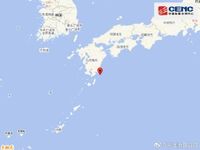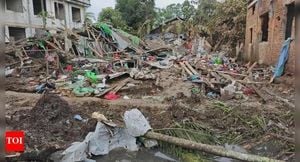On April 2, 2025, a 6.2 magnitude earthquake shook the sea area near Kyushu Island, Japan, at 22:04 Beijing time (23:04 local time). The earthquake's epicenter was located at a depth of 30 kilometers, precisely at 31.15 degrees north latitude and 131.50 degrees east longitude, according to the China Earthquake Networks Center.
Japan, an archipelago comprising four major islands—Hokkaido, Honshu, Shikoku, and Kyushu—and over 3,900 smaller islands, is situated at the intersection of the Pacific Plate and the Eurasian Plate. This geological positioning places Japan within the circum-Pacific seismic belt, known for its high frequency of earthquakes.
The Pacific Plate, which is relatively thin and dense, sits lower than its neighboring plates. When the Pacific Plate collides with the Eurasian Plate, the resultant pressure causes the rock layers at their junction to deform and fracture, leading to earthquakes and volcanic eruptions.
In the immediate aftermath of the 6.2 magnitude quake, no large or medium-sized cities were reported within a 300-kilometer radius of the epicenter. The average altitude in the vicinity of the epicenter was about -373 meters, indicating that the earthquake's impact was primarily on marine terrain.
Additionally, at 23:04 local time on the same day, a separate 6.0 magnitude earthquake struck near the eastern part of the Oita Peninsula, also in Japan, with a focal depth of 40 kilometers and a maximum seismic intensity of 4. The Oita Peninsula is located at the southern tip of Kyushu Island.
Local authorities in Kanoya City, Kagoshima Prefecture, reported feeling the tremors but confirmed that there were no incidents of falling objects or injuries. Kyushu Electric Power Company is currently assessing whether the Sendai Nuclear Power Plant was affected by the seismic activity.
Prior to these recent earthquakes, the Japanese government had been closely monitoring seismic activity and had released a report on March 31, 2025, detailing the potential impacts of a future "Nankai Trough Megathrust Earthquake." This report estimated that such an event could result in as many as 298,000 deaths, a staggering figure that is 18.7 times greater than the fatalities recorded during the devastating March 11, 2011 earthquake, which claimed 15,900 lives.
On January 15, 2025, Japan's government earthquake investigation team issued a warning stating that the likelihood of a megathrust earthquake (magnitude 8 or above) occurring in the Nankai Trough within the next 30 years had risen to 80%. This figure had previously been estimated at between 70% and 80%. Notably, the coastlines of Nemuro City in Hokkaido and Miyagi Prefecture were highlighted as areas with an even higher risk of such catastrophic seismic events.
The recent earthquakes near Kyushu Island have reignited discussions about Japan's seismic preparedness and the need for robust disaster response strategies. With the country being one of the most earthquake-prone regions in the world, the government and local authorities are continuously working to improve infrastructure and public awareness to mitigate the impacts of future seismic events.
As Japan continues to face the realities of living in a seismically active zone, the importance of earthquake preparedness cannot be overstated. The latest tremors serve as a reminder of the ever-present risks and the necessity for vigilance in disaster management.







